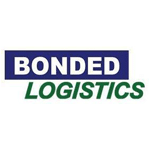Warehouse Order Picking: An Expert Evaluation of FIFO, LIFO, FEFO, and More

Warehouse inventory management and order picking are complex processes with a range of methods and strategies employed to ensure efficiency, accuracy, and safety. Each approach has its advantages and disadvantages and can be tailored to the specific needs of your facility.
In this blog post, we’ll evaluate several common inventory management and warehouse picking strategies to determine which is best suited to your warehouse. We’ll explain FIFO (first in, first out), LIFO (last in, first out), FEFO (first expiry, first out), and other potential methods such as FEMAL, HIFO, and LOFO. We’ll also explore the implications for inventory management and inventory valuation methods such as the Average Cost Method.
What is Picking in Warehouse Operations?
Warehouse order picking is the process of product allocation and preparing products for shipment. It’s a critical part of any warehouse operation, as it impacts your company’s delivery times, customer satisfaction, and profitability.
Common warehouse picking methods include Discrete, Batch, Wave, Zone, and others. However, the picking method you use depends on your warehouse and inventory management system, as well as the specific needs of your business.

What Are the Different Order Picking and Inventory Management Strategies?
When it comes to order picking strategies, several common methods can be employed by warehouses. Depending on your business needs and the type of goods you store, different strategies may be more appropriate. For example, a method like FIFO is often used for perishable goods, while some methods may be preferred for tax and accounting purposes. Warehouse allocation methods are often independent from accounting methods.
FIFO (First In, First Out)
FIFO stands for “First In, First Out” and is one of the most widely used order picking strategies. With the FIFO method, you pick from the oldest inventory first, ensuring that products don’t become stale or outdated. This is often the preferred method for items with a short shelf life, such as food and beverages, pharmaceuticals, and medical supplies.
- Advantages: FIFO is a simple system to understand and manage, and it ensures that all items in your warehouse are moved regularly. It also minimizes any risk of wastage due to expiration dates, as the products with the closest expiry date will be used first.
- Disadvantages: As FIFO moves all products through the system at roughly the same rate, it may mean that the most profitable items are not shipped first. This can lead to delays in receiving payment for those high-margin products, reducing overall profitability.
LIFO (Last In, First Out)
LIFO stands for “Last In, First Out” and is another popular order picking strategy. With this method, you pick from the most recently received inventory first. This approach is often used in warehouses with a large variety of items that have similar shelf lives, as it can help reduce obsolescence costs by ensuring products are moved out quickly.
- Advantages: LIFO is often the preferred option for companies that have high turnover and seasonal products, as it allows them to prioritize their freshest items. It also ensures that high-margin goods are shipped first, increasing profitability.
- Disadvantages: LIFO can lead to problems with expiry dates, as products that are closest to their expiration may be shipped first. This could result in wastage and additional costs for the company.

FEFO (First Expiry, First Out)
FEFO stands for “First Expiry, First Out” and is a variation of the FIFO approach. With this method, you pick from the items that are closest to expiration first. This ensures that products don’t expire before they can be sold, reducing waste and ensuring customers receive products in the best condition possible.
- Advantages: FEFO helps you manage your inventory more effectively and prevents wastage due to expired items. It also allows you to prioritize the freshest items for shipment, ensuring customer satisfaction.
- Disadvantages: FEFO can be difficult to manage and track, as you’ll need to keep detailed records of product expiration dates.. This can add additional costs in terms of time and resources.
Other Strategies
In addition to the three primary strategies outlined above, several others could potentially be used in a warehouse setting. These include:
FEMAL (First Expiry Minimum Available Lifetime):
The FEMAL approach is similar to FEFO, except it takes into consideration the minimum available lifetime of the products. This ensures that the items are shipped before they reach their expiration date, while still allowing them to remain on the shelves for as long as possible. Often, this is dictated by customer and may only apply to that customer.
HIFO (Highest In, First Out):
The HIFO strategy prioritizes picking the items that had the highest cost to purchase first. This will cause the company’s financials to reflect the highest possible cost of goods sold (COGS) for any period as well as a minimum cost of ending inventory.
LOFO (Lowest In, First Out):
This is the opposite of HIFO, and it prioritizes picking items with the lowest cost first. This will help to keep COGS as low as possible and can generate a higher net income being reported.
First One Found:
This isn’t really an inventory or order picking strategy, but it involves simply selecting the first item that can be found. As you can imagine, this isn’t an organized approach. Rather, it is sometimes used in lieu of having a proper order picking strategy. However for warehouses that are using primarily floor storage without racking, this may be valid.
It’s important to note that not all of these strategies are commonly practiced, appropriate, or compliant with regulations. We’ll briefly discuss accounting compliance later in this article.
How Does Order Picking Impact Your Inventory Valuation Method?
The order picking strategies you use will have an impact on your inventory valuation methods. For example, using FIFO or FEFO could result in the cost of goods sold being lower since the oldest items are shipped first. On the other hand, using the LIFO method may result in a higher cost of goods sold because newer items tend to be more expensive than older ones. This is true in an inflationary environment with rising prices, however, if the price of goods is falling, LIFO could result in a lower cost of goods sold than FIFO.
It’s important to note that the inventory valuation method you use for accounting purposes should be in line with the order picking strategy you’re employing. For example, if you’re using a FIFO approach for order picking, you should also use the corresponding FIFO inventory valuation method in your accounting records.
Average Cost Method of Inventory Valuation
The Average Cost Method, commonly referred to as AVCO, of inventory valuation is another method used to determine the value of inventory items based on their average acquisition price. This method helps businesses keep track of their inventory costs and ensure accurate financial reporting.
Under the AVCO, the total cost of an item is divided by its quantity to arrive at the average acquisition price. This value is then used to calculate the cost of any new items added to the inventory, which helps with pricing and sales decisions. The AVCO also adjusts for price changes over time, which is beneficial in cases where the cost of goods varies throughout a period.
Calculating Accurate Inventory Value
When using the average cost method, businesses should take into account any discounts or additional costs associated with the purchase of an item. This helps to ensure that the costs are accurately reflected when calculating inventory value. Additionally, businesses may choose to include freight and shipping costs in their calculations, as these can have a significant impact on the cost of goods.
The AVCO is beneficial for businesses looking for an accurate way to track inventory costs over time. By taking into account price variations and discounts, businesses can ensure that their financial statements accurately reflect the value of their inventory. Additionally, the AVCO is easy to use and can be adjusted as needed.
Other Order Picking Considerations
When it comes to order picking, there are a few other considerations that businesses must keep in mind.
Efficiency and Workflow
Businesses should look for ways to optimize their workflow and find ways to reduce the time it takes to pick, pack, and ship orders. Businesses should also ensure that they are adequately stocked on all items to minimize wait times for customers.
Warehouse Picking Methods
Some of the most common order picking methods include batching, zone picking, pick-to-cart, and wave picking. Batching is a strategy in which orders are grouped based on common characteristics, such as customer location or product type. Zone picking divides the warehouse into zones, with each worker responsible for items within their assigned zone. Pick-to-cart is an automated system where workers use carts to quickly move items from one location to another. Wave picking is a system where workers are assigned specific tasks that are completed in waves throughout the day.
What is Case Picking in a Warehouse?
Case Picking is a type of order picking used in warehouses that involves selecting, packing, and shipping items in their original boxes or cases. This practice helps minimize the risk of damage or loss during storage and transit, especially when it comes to fragile items. Case picking also helps speed up the overall workflow as it reduces the human labor needed for individual item picking. Additionally, it helps in reducing storage costs as multiple items can be stored together in one box or case.
Equipment and Technology
To optimize for case picking or any other picking strategy, warehouses must have the right equipment and set up processes that ensure accuracy and efficiency. Utilizing automation technologies like pick-to-light systems, RF technology, and voice recognition systems can help warehouses speed up the order picking process and reduce errors. Furthermore, warehouses should also adopt a cycle counting system that allows them to easily track their inventory levels regularly.
When selecting an order picking strategy, warehouses should consider factors such as warehouse size, number of orders, SKU types, and item locations. Additionally, warehouses should evaluate the capabilities of their current warehouse management system (WMS) and technology, then invest in a solution that can support their chosen strategy. By selecting the right order picking strategy for their environment, warehouses can ensure efficient operations and maximize inventory value.

Ensuring Accurate Financial Reporting
Inventory management is essential for creating an accurate balance sheet and financial statement. The AVCO inventory valuation method is an important accounting method that helps businesses track the cost of goods sold over a given accounting period. By taking into account variations in price and discounts, this inventory method allows businesses to accurately record the value of their ending inventory on their balance sheets. Additionally, order picking strategies can have a significant impact on inventory value, as they can help to reduce costs and ensure that customers receive their orders promptly.
Complying with Generally Accepted Accounting Principles (GAAP)
Generally Accepted Accounting Principles (GAAP) are a set of accounting rules and regulations established by the Financial Accounting Standards Board (FASB) to ensure that financial statements are prepared in accordance with accepted accounting standards. The AVCO valuation method is one way to ensure that businesses comply with GAAP, as it provides an accurate way to track inventory costs over time.
Picking Warehouse Strategies Conclusion
Order picking is an essential function of warehouse management, and by selecting the right strategy, warehouses can optimize their processes and ensure accurate financial reporting. Common warehouse inventory and picking strategies include FIFO, LIFO, FEFO, as well as others.
Warehouses need to evaluate their current technology, consider factors such as warehouse size, type of goods, and order volume, and then invest in solutions that can support the chosen strategy.
For help choosing the right system and strategy to manage and pick your company’s inventory, contact us to speak to one of our warehouse experts today.









